News Updates
NEWS CENTER
Related News
There is currently no data available
2022 Guangdong Province Intellectual Property Service Industry Statistical Survey Report
Release Time:
2022-12-13
According to the work arrangement of the State Intellectual Property Office, in the early stage, the Guangdong Provincial Intellectual Property Protection Center organized a statistical survey on the intellectual property service agencies in our province. According to statistics, as of the end of 2021, there were nearly 20,000 intellectual property service agencies in Guangdong, accounting for about 1/4 of the country's total; there were approximately 210,000 employees, accounting for 23.1% of the country's employees. This sampling survey adopted an online questionnaire survey. A total of 850 original samples were selected, and 791 valid questionnaires were recovered, with a recovery rate of 93.1%. This report is based on the 791 valid questionnaires returned by the survey, and is formed by comparing and analyzing the statistical survey data in 2021 and 2020.
1. Main conclusions
(1) The scale of the institution continues to expand
Comparing the intellectual property service organizations interviewed in 2021 and 2020, the proportion of organizations with 11-50 or more employees has increased year by year, and the scale of organizations is constantly expanding.
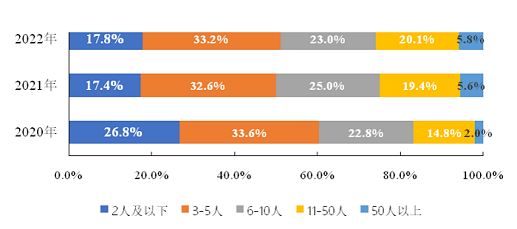
Figure 1 Changes in the scale of service organizations from 2020 to 2022
In 2022, 48.5% of the intellectual property service organizations surveyed will recruit new employees, with an average of 3.09 people recruited per organization and 2.43 people transferred (resigned), with an average net increase of 0.67 people per organization. Among organizations with new employees, 46.1% have fresh graduates, mainly between the ages of 20 and 30.

(2) The talent structure is optimized year by year
32.7% of the intellectual property service institutions surveyed have staff with graduate degrees or above, an increase of 5.2% compared to last year, and the upward trend is obvious. There are 1,904 employees with graduate degrees or above, accounting for 14.8% of all employees. The average number of employees with graduate degrees or above in a single institution is 2.41.
In 2022, 15.4% of institutions will have personnel with senior technical titles, with an average of 0.46 people per institution; 30.0% of institutions will have personnel with intermediate technical titles, with an average of 0.91 people per institution.
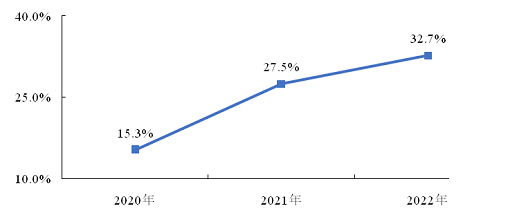
Figure 2 Proportion of institutions with graduate degrees or above from 2020 to 2022
(3) The scope of services continues to expand
Among the institutions surveyed, 710 provide intellectual property agency services, accounting for 89.8%; 343 provide intellectual property consulting services, accounting for 43.4%; 184 provide intellectual property legal services, accounting for 23.3%; 180 companies carry out intellectual property information services, accounting for 22.8%; 63 institutions carry out intellectual property training services, accounting for 8.0%; 44 institutions involve intellectual property operation services, accounting for 5.6%.
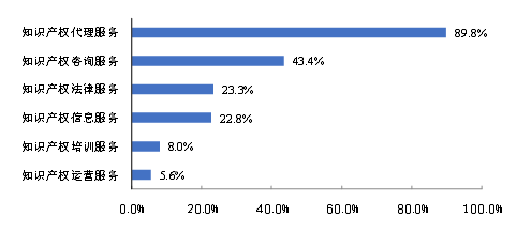
Figure 3 Service types of intellectual property service agencies in Guangdong Province in 2022
50.9% of intellectual property service agencies provide foreign-related intellectual property services to domestic enterprises or individuals, an increase of 6.7% from 2021. 18.8% of intellectual property service agencies provide services to overseas customers. The larger the scale of intellectual property service institutions, the higher the proportion of foreign-related intellectual property services provided.
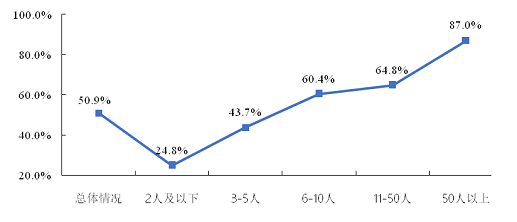
Figure 4 The proportion of institutions of each size that provide foreign-related services
(4) Digital transformation is still in its infancy
In the relevant aspects of providing intellectual property services and producing service products, 29.2% of the institutions surveyed have made use of digital technologies such as artificial intelligence, big data, cloud computing, blockchain, and network communications. There are institutions that utilize digital technology, more than 80% of which are used to provide intellectual property agency services, and about 20% of which are used to provide consulting services, information services and legal services.
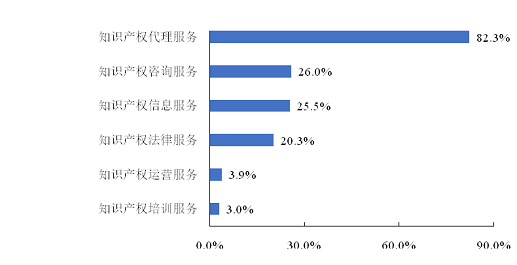
Figure 5 Utilization of digital technologies by service type
The interviewed institutions believe that digital transformation can promote the efficiency and quality of various intellectual property services, especially agency services. Most of the larger organizations have taken the initiative to carry out digital transformation, and more than 60% of the interviewed organizations with more than 50 employees have made use of digital technologies; while smaller organizations recognize the promotion role of digital transformation, but their own transformation level is low. , the willingness to recruit talents in digital technologies such as artificial intelligence, big data, cloud computing, etc. is also relatively low.
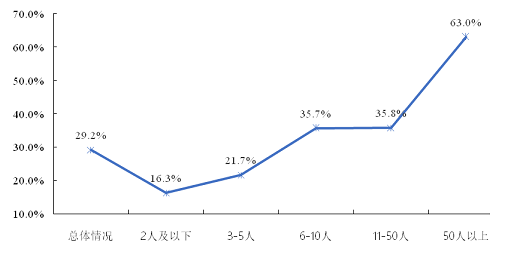
Figure 6 Utilization of digital technologies by intellectual property service organizations of various sizes
(5) Expansion of benefits from incentive policies
The survey shows that the proportion of intellectual property service institutions that have enjoyed incentive policies is 62.6%, an increase of 5.4 percentage points from 2021, and the scope of benefits from the policy continues to expand. Among them, the interviewed institutions said that tax relief and financial assistance have the greatest impact on operating income.
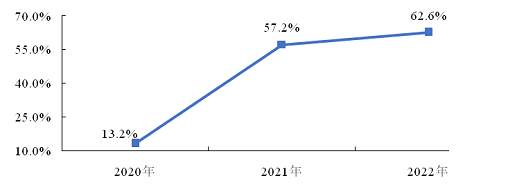
Figure 7 Proportion of institutions that have enjoyed incentive policies from 2020 to 2022
2. Problems
(1) The high-end diversification of institutional services is still insufficient
At present, Guangdong still lacks influential brand service agencies in the country. The intellectual property service agencies interviewed mainly provide one type of service. The intellectual property agencies are limited by their scale and professionalism, and their business mainly relies on basic agency services. At the same time, the informatization capabilities of service organizations are still insufficient, with only about 10% of organizations stating that they have achieved digital transformation and integration, forming an integration of services and management.
(2) There is still a gap between the talent needs of service organizations and the construction of talent teams.
The survey shows that the demand for highly educated and highly skilled talents in service organizations is gradually increasing. The proportion of institutions with graduate degree or above personnel has increased compared with the previous two years, while the number of personnel with graduate degree or above in a single institution has increased compared with There has been a loss in one year, and there is a large gap in talents in digital technologies such as artificial intelligence, big data, cloud computing, or other complex high-end talents.
(3) Regional imbalance in the development of service industry
The survey shows that the development level of the intellectual property service industry shows the characteristics of uneven development across regions. Institutions with better service capabilities are mainly concentrated in Guangzhou, Shenzhen, Zhongshan, Dongguan and other cities. There are a large number of service institutions with long business chains and poor service. High quality and many employees. The business scope of service agencies in other cities mainly focuses on intellectual property agency, and the problem of mismatch between service capabilities and industrial development is prominent.
(4) Factors such as the epidemic have an impact on institutional development
The COVID-19 epidemic has a greater impact on the business income and business expansion efficiency of service organizations. The surveyed service agencies generally believe that the profit changes of various types of intellectual property services have decreased, especially for intellectual property agency services. 67.5% of the agencies said that the profits of agency services have decreased compared with the previous year. In addition to the impact of the COVID-19 epidemic, there are also problems such as vicious competition and insufficient demand in the development process of the service industry.
3. Countermeasures and suggestions
High-level development of the intellectual property service industry is an important task in building a strong intellectual property province in Guangdong. Based on the results of this survey, the following suggestions are put forward.
(1) Increase policy support
On the basis of adhering to marketization and socialization, we should increase policy support for the intellectual property service industry, especially financial and talent support, encourage social funds to invest in the intellectual property service industry, and form a new situation that brings together the efforts of all parties to develop the intellectual property service industry. Explore tax exemption and financial assistance policies, and increase policy support for small-scale service organizations.
(2) Strengthening supervision of the intellectual property service industry
Strengthen and standardize interim and ex-post supervision in the field of intellectual property services, promote fair competition through fair supervision, and optimize the business environment. Accelerate the formulation and implementation of industry standards and technical specifications, and strengthen self-discipline and external supervision of the intellectual property service industry. Establish a credit system for the intellectual property service industry, and restrict or disqualify service agencies that have serious violations of laws and regulations in relation to intellectual property policy support, institutional cultivation, talent selection, etc.
(3) Promote the innovative development of the intellectual property service industry
Encourage the diversified and high-end development of service agencies, deepen the coordinated development of subdivided services and comprehensive services, expand the business scope of intellectual property operations, investment and financing, patent insurance, asset evaluation, etc., and innovate service models. Support intellectual property service agencies to make full use of informatization, digitalization, and intelligent technologies to develop convenient query and retrieval tools and visual data statistical analysis tools to improve service capabilities.
(4) Improving intellectual property foreign-related service capabilities
Guangdong is an export-oriented economy and has strong demand for overseas intellectual property services. The survey shows that the customer scope of service agencies is showing a trend of expansion. Efforts should be made to cultivate the brands of foreign-related service agencies, increase the training of foreign-related intellectual property talents, and encourage service agencies to cooperate with domestic and foreign intellectual property service agencies to provide overseas intellectual property services to innovative entities.
(5) Strengthen the construction of talent teams in the intellectual property service industry
Formulate incentive policies for intellectual property talents and improve the training, evaluation and incentive, and mobility allocation mechanisms for intellectual property talents. Implement high-level talent training plans to help intellectual property service institutions introduce and cultivate talents. In response to the service needs of intellectual property service agencies, establish a professional and standardized talent training system, improve the joint training mechanism for government, school and enterprise talents, and support colleges and universities to accelerate the construction of the Master of Intellectual Property (MIP) discipline. Improve the intellectual property title evaluation mechanism to meet the professional title evaluation needs of practitioners at different levels, categories, and fields.
(6) Consolidate the infrastructure of intellectual property public services
Improve the intellectual property public service system, accelerate the construction of intellectual property service industry cluster centers, build an intellectual property big data service platform, increase the supply of data resources and information resources, and improve the convenience, accuracy, and timeliness of data acquisition by service agencies. Give full play to the role of intellectual property pre-examination and review service mechanisms, and enhance the professional capabilities of intellectual property service agencies in strategic emerging industries.
(7) Guide the coordinated and integrated development of regional service industries
Give full play to the radiating and leading role of the intellectual property service industry in cities in the Pearl River Delta. On the one hand, the industrial park is used as an interface to match supply and demand, guide high-end service institutions to deeply connect with innovation entities in eastern Guangdong, western Guangdong, and northern Guangdong, and promote the deep extension of high-end service industries to industrial regions. On the other hand, establish a cooperation mechanism for regional intellectual property service agencies, deepen cooperation in aspects such as talent training, business expansion, and resource exchange, and enhance the overall capabilities of the intellectual property service industry. (Source: Guangdong Intellectual Property Protection Center)
More intellectual property information and services
Follow the official subscription account of [Shenxin Intellectual Property] on the code

Follow the official service account of [Shentrust Intellectual Property Service Platform] on the code

相关新闻
Telephone:
Telephone:+86-755-82566227、82566717、13751089600
Head Office:13 / F, Building 14, Longhua Science and Technology Innovation Center (Mission Hills), No. 8 Golf Avenue, Guanlan Street, Longhua District, Shenzhen
Head Office:
13 / F, Building 14, Longhua Science and Technology Innovation Center (Mission Hills), No. 8 Golf Avenue, Guanlan Street, Longhua District, Shenzhen
Subsidiary Company:2808, Block B2, Yuexiu Xinghui Junbo, No.18 Tazihu East Road, Jiangan District, Wuhan City, Hubei Province
Subsidiary Company:
2808, Block B2, Yuexiu Xinghui Junbo, No.18 Tazihu East Road, Jiangan District, Wuhan City, Hubei Province

Service Number

Subscription Number
Copyright ©2016 Shenzhen Shenkexin patent Agency Co., LTD All rights reserved | 粤ICP备2021174526号
Copyright ©2016 深圳市深可信专利代理有限公司 版权所有 | 粤ICP备2021174526号 SEO标签
Copyright ©2016 深圳市深可信专利代理有限公司 版权所有